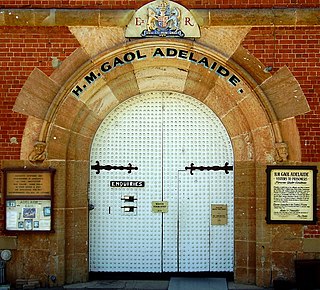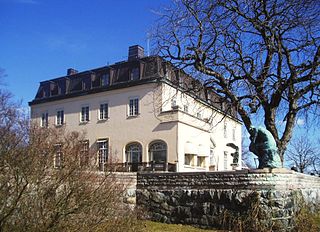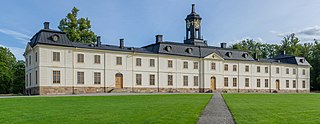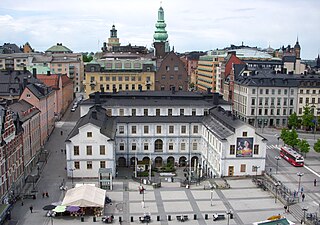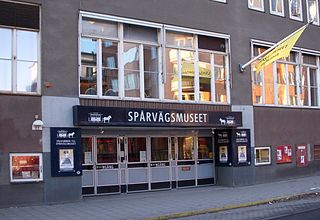
Smedjegården (literally: "Blacksmiths' Yard"), initially Nya smedjegården ("New Blacksmiths' Yard"), was a prison in Stockholm, in use between 1636 and 1896.
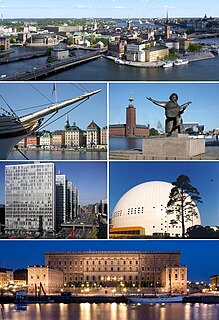
Stockholm is the capital of Sweden and the most populous urban area in the Nordic countries; 962,154 people live in the municipality, approximately 1.5 million in the urban area, and 2.3 million in the metropolitan area. The city stretches across fourteen islands where Lake Mälaren flows into the Baltic Sea. Just outside the city and along the coast is the island chain of the Stockholm archipelago. The area has been settled since the Stone Age, in the 6th millennium BC, and was founded as a city in 1252 by Swedish statesman Birger Jarl. It is also the capital of Stockholm County.
The name was derived from a prison, similarly known as Smedjegården, in the dungeons of the royal castle Tre Kronor, in use until the castle was destroyed by fire in 1697. There the prisoners were made to labor in the castle's smithy.

Tre Kronor was a castle located in Stockholm, Sweden, on the site where Stockholm Palace is today. It is believed to have been a citadel that Birger Jarl built into a royal castle in the middle of the 13th century. The name "Tre Kronor" is believed to have been given to the castle during the reign of King Magnus IV in the middle of the 14th century.

A forge is a type of hearth used for heating metals, or the workplace (smithy) where such a hearth is located. The forge is used by the smith to heat a piece of metal to a temperature where it becomes easier to shape by forging, or to the point where work hardening no longer occurs. The metal is transported to and from the forge using tongs, which are also used to hold the workpiece on the smithy's anvil while the smith works it with a hammer. Sometimes, such as when hardening steel or cooling the work so that it may be handled with bare hands, the workpiece is transported to the slack tub, which rapidly cools the workpiece in a large body of water. However, depending on the metal type, it may require an oil quench or a salt brine instead; many metals require more than plain water hardening. The slack tub also provides water to control the fire in the forge.
The Nya smedjegården was founded in 1636 at the street Drottninggatan in Stockholm. From 1664 onward, it was the site for prisoners awaiting death penalty in Stockholm. The building housed also a house of correction, an infamous torture chamber (Rosenkammaren), until the abolition of torture in 1772, and an orphanage (Allmänna Barnhuset) until 1886.

Drottninggatan in Stockholm, Sweden, is a major pedestrian street. It stretches north from the bridge Riksbron at Norrström, in the district of Norrmalm, to Observatorielunden in the district of Vasastaden.

The house of correction was a type of establishment built after the passing of the Elizabethan Poor Law (1601), places where those who were "unwilling to work", including vagrants and beggars, were set to work. The building of houses of correction came after the passing of an amendment to the Elizabethan Poor Law. However the houses of correction were not considered a part of the Elizabethan Poor Law system because the Act distinguished between settled poor and wandering poor.

A torture chamber is a room where torture is inflicted. The medieval torture chamber was windowless and often built underground, was lit by a few candles and was specifically designed to induce "horror, dread and despair" to anyone but those possessing a strong mind and "nerves of steel".
Until 1849, the prison was used for both male and female prisoners—normally not kept separate from each other. [1] Then Smedjegården was transformed into a women's prison. The institution was replaced in the 1890s, and the building demolished. On the site, Stockholm's People's House was erected.
